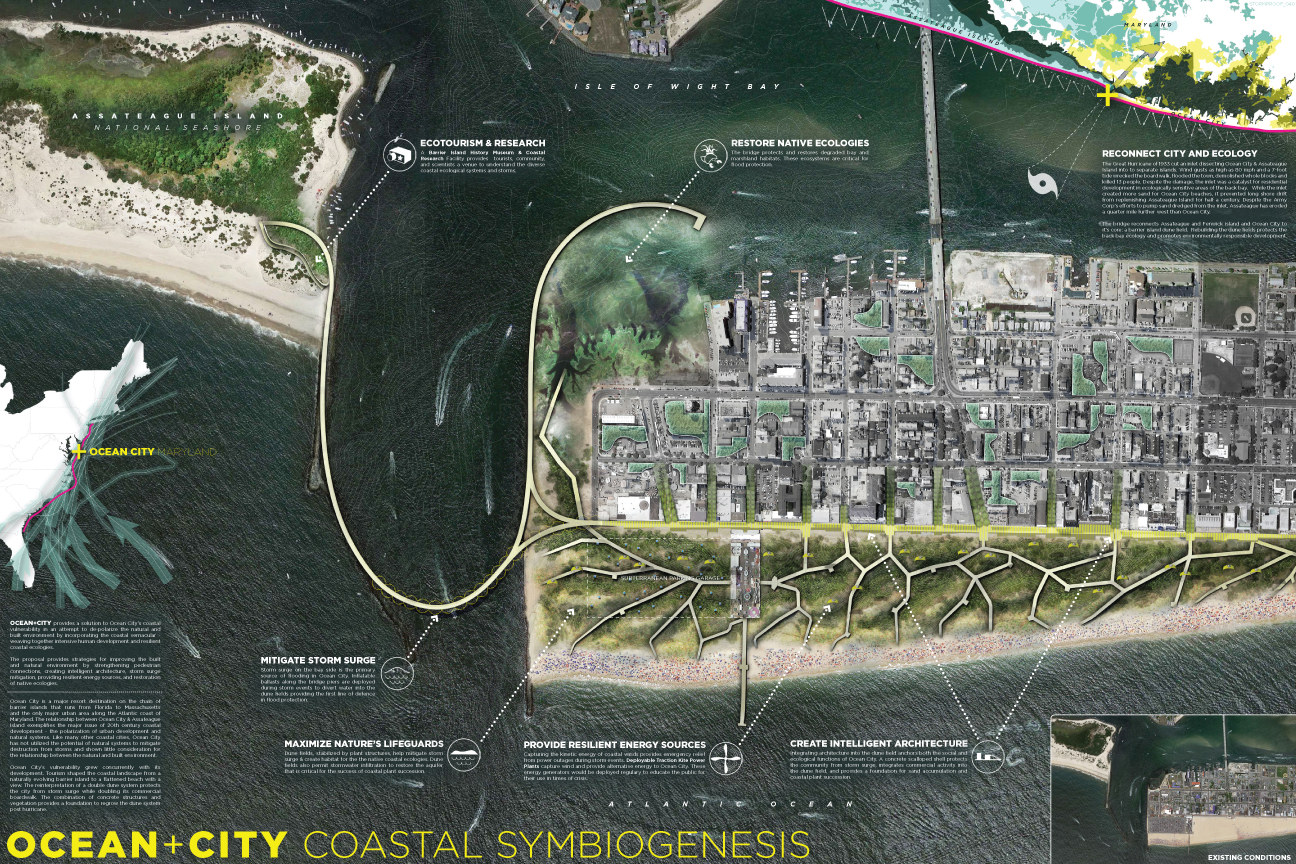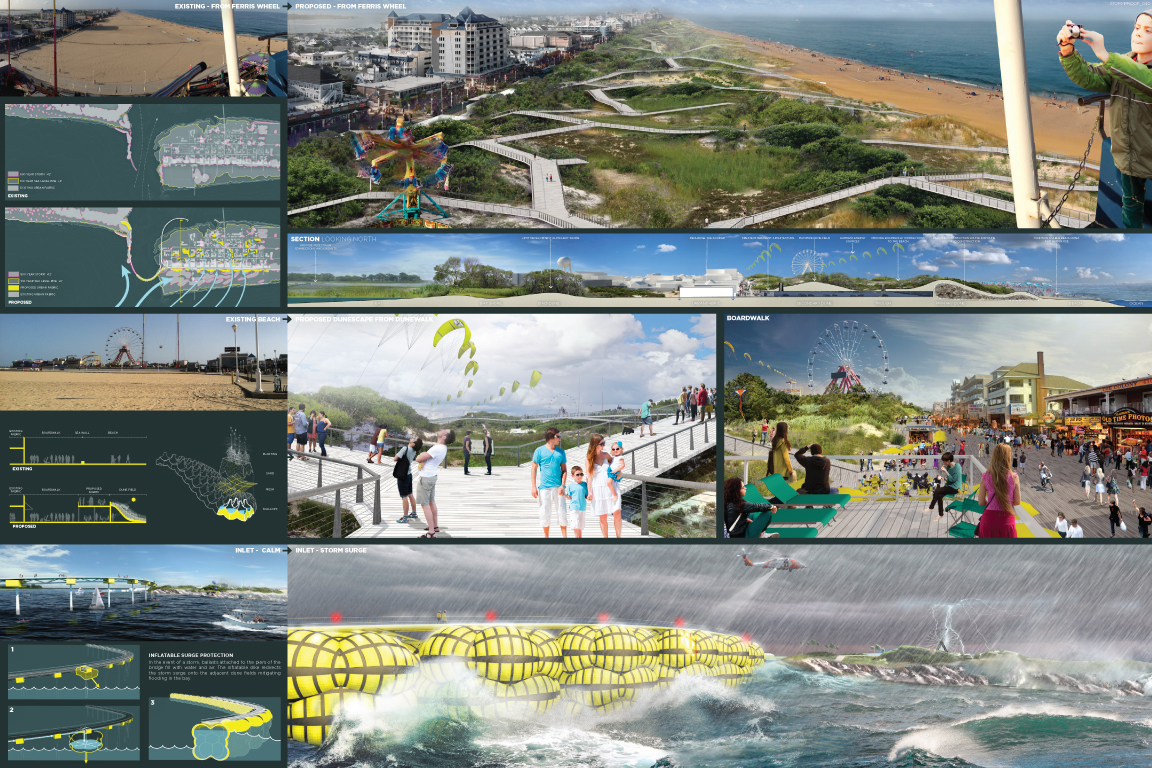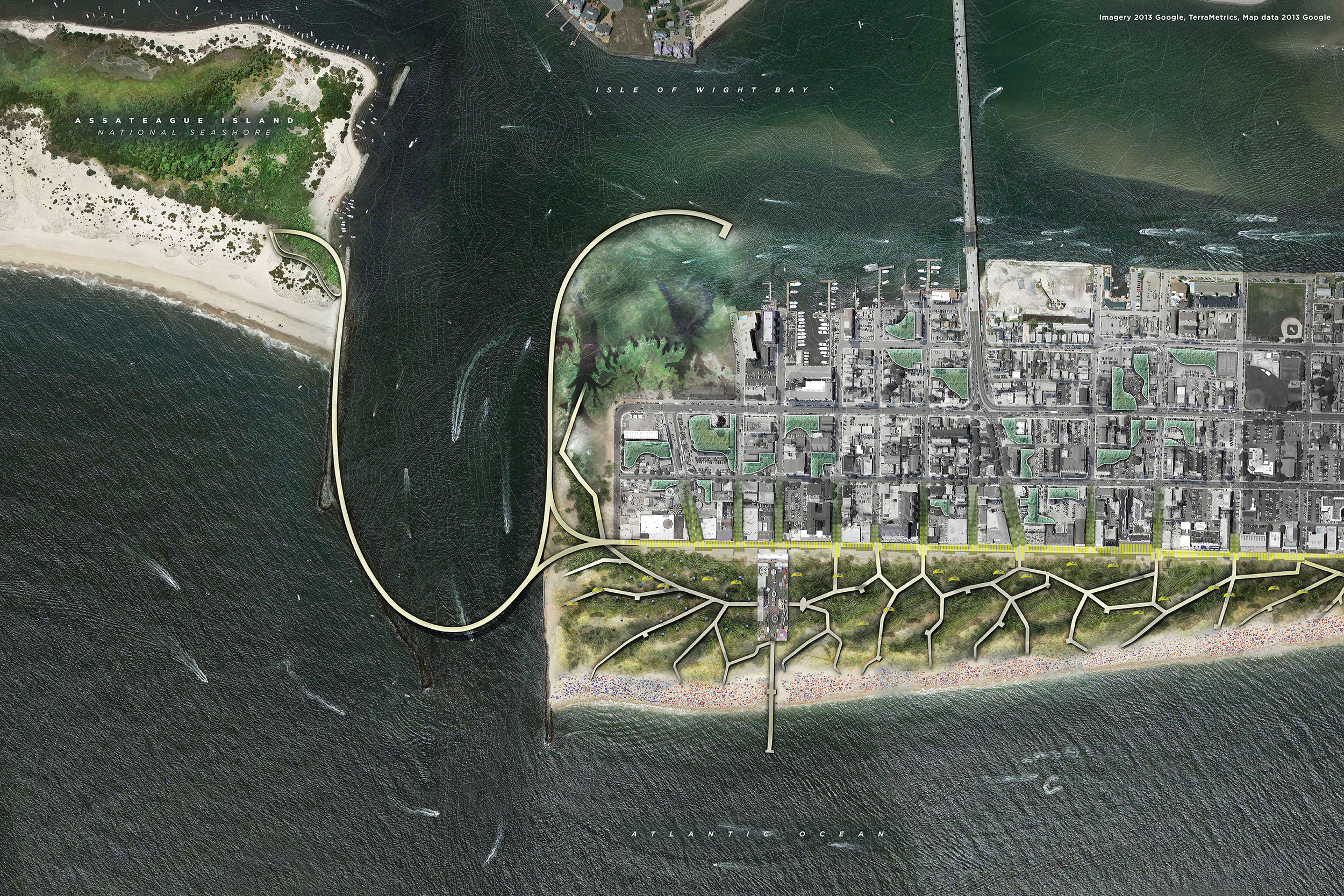OCEAN + CITY Ocean City, MD
Competition Entry
Click Here to see the OCEAN + CITY feature on Bustler
OCEAN+CITY provides a solution to Ocean City’s coastal vulnerability in an attempt to de-polarize the natural and built environment by incorporating the coastal vernacular - weaving together intensive human development and resilient coastal ecologies.
The relationship between Ocean City & Assateague Island exemplifies the major issue of 20th century coastal development - the polarization of urban development and natural systems. The Great Hurricane of 1933 cut an inlet dissecting Ocean City & Assateague Island into two separate islands.
Despite the [hurricane's] damage, the inlet was a catalyst for residential development in ecologically sensitive areas of the back-bay. While the inlet created more sand for Ocean City beaches, it prevented long shore drift from replenishing Assateague Island for half a century. Despite the Army Corp’s efforts to pump sand dredged from the inlet, Assateague has eroded a quarter mile further west than Ocean City. Ocean City’s vulnerability grew concurrently with its development.
OCEAN+CITY’s reinterpretation of a double dune system protects the city from storm surge while doubling its commercial boardwalk. The combination of concrete structures and vegetation provides a foundation to re-grow the dune system post-hurricane
MAXIMIZE NATURE’S LIFEGUARDS: Rebuilding dune fields protects the back-bay ecology and promotes environmentally responsible development. Stabilized by plant structures, dunes help mitigate storm surge & create habitat for the native coastal ecologies. Dune fields also permit stormwater infiltration to restore the aquifer that is critical for the success of coastal plant succession.
MITIGATE STORM SURGE: Storm surge on the bay side is the primary source of flooding in Ocean City. An inflatable barrier along the proposed bridge piers are deployed during storm events to divert water into the dune fields providing the first line of defense in flood protection. The bridge reconnects Assateague and Fenwick Island and Ocean City to its core: a barrier island dune field.
PROVIDE RESILIENT ENERGY SOURCES: Capturing the kinetic energy of coastal winds provides emergency relief from power outages during storm events. Deployable Traction Kite Power Plants capture wind and provide alternative energy to Ocean City. These energy generators would be deployed regularly to educate the public for their use in times of crisis.
RESTORE NATIVE ECOLOGIES: The bridge also protects and restores degraded bay and marshland habitats. These ecosystems are critical for floodprotection and the health of the water.
CREATE INTEGRATED ARCHITECTURE: Integrating architecture into the dune field anchors both the social and ecological functions of Ocean City. A scalloped architectural shell protects the community from storm surge, integrates commercial activity into the dune field, and provides a foundation for sand accumulation and coastal plant succession.
ECOTOURISM & RESEARCH: A Barrier Island History Museum & Coastal Research Facility provides tourists, community, and scientists a venue to understand the diverse coastal ecological systems and storms.
Renderings by © Henry Moll, Chris Landau, Joey Hays and Will Belcher









